Breakfast Bread
Wake and bake, reimagined
I like a hearty bread for breakfast. Whole grain, long-fermented, sourdough, lots of dried fruit with seeds on the outside; you know what I’m describing. The powerBROT in my book is a good example. With 16 ingredients bringing texture, sweetness, health, and flavor, it’s a delicious brick: a perfect way to fuel the day (with additional butter and coffee).
But there’s a problem. PowerBROT is a project. From setting the soaker and preparing the preferment on day one to the mixing, seeding, shaping, proofing, and baking on day two, it’s a bit of a thing. Sometimes, maybe too much.
So I had an idea. What if I could effectively combine the preferment, bulk, soaker, and final proofing into a single long step? Could I mix a dough with a small amount of sourdough culture, dried fruit, aromatics, flour, and flaked grains, then immediately shape it and proof it in pans at room temperature overnight? Would it work? I didn't think it would overproof if I got the amount of culture right, and I could bake it immediately when I woke up in the morning.
And so the Breakfast Bread was born.
While I wouldn’t try this with a hearth loaf – those breads need a little more guidance – for something dense in a pan like Rugbrød or Vollkornbrot, it would be perfect. The whole grains would have time to hydrate, giving the enzyme phytase time to break down phytic acid. Fermentation would be slow and long, adding flavor and digestibility and, unlike the project of powerBROT, the process would theoretically set a warm slice of respectable bread next to my coffee cup before I’m fully awake.
After thinking a little further I opened a worksheet in Excel and started to type, adding lines for flour (any whole grain will probably work, maybe even GF?), water, dried fruit, flakes (rolled oats, etc.), salt, culture, fat, maple syrup, and orange zest and started adding baker’s percentages. Then I fixed the batch amount to accommodate the small pans that I always use for breads like this (I like the crust to crumb ratio) and started chopping any larger pieces of dried fruit.
If your pantry is like mine, the dried fruit situation is variable. Sometimes I have dates, usually raisins, occasionally currants, dried blueberries, cranberries, bing cherries, yellow raisins, or apricots. With the emphasis here on flexibility, it’s a bread which, by design, will never be the same twice. I like that.
I pitted and chopped some dates, filling in additionally with raisins, cranberries, currants and even some candied orange peel. I zested one whole orange and added the butter and maple syrup. I poured over boiling water and let the mixture steep and cool slightly before adding the sourdough culture, salt, and whole wheat flour. After a brief hand-mix to combine I buttered two small loaf pans, placed one on the scale, tared it, and measured the sticky dough. After repeating with the second pan I wet my hand and smoothed the surface, pressing the dough into the corners before sprinkling a heavy coat of sesame seeds. Using a stiff dough scraper I scored an “X” into the surface, checked the dough temperature (85˚F) and covered them to rise overnight in a spot that was neither warm nor cool.
The first batch was good. My main goal was to make sure it didn’t over-rise while I slept. Quite the opposite: it was sluggish (dried fruit pulls lots of water putting osmotic pressure on the yeast populations). Good. I can fix that, I thought. That evening, after dinner, back to the Excel sheet, to increase water (for more activity) and also the amount of culture as well as the scale weight for each loaf (from 450 to 500g). Round two was unchanged otherwise and I almost leapt out of bed the next morning to see how it had done. It had a better rise than the first iteration but I wanted just a little more. So, more water, more culture.
And so it went, each day for almost a week, mix after dinner, bake before breakfast. In the course of testing the element that’s remained consistent throughout is that the bread is really, really good. Incredible depth of flavor, deeply satisfying with not just a smear of butter (amateur territory), but a full slice of butter plus coffee or tea. And if you tire of eating it like that, cut very thin slices then toast until crisp in a low oven and enjoy with salad.
Let’s make it.
Breakfast Bread
Yield: 2 5.25” by 3” mini loaves
Fruit, dried*, 294g
Oats, old-fashioned, 59g
Oil or butter, 12g
Maple syrup or honey, 24g
Orange zest (one to two medium oranges), 14g
Water, boiling, 270g
*Baker’s choice. Chop anything larger than a raisin or dried cranberry (such as dates, dried pear, peach, or prunes) down to a size similar to a raisin.
In a medium bowl combine the dried fruit, oats, butter, maple syrup, orange zest, and boiling water. Steep for a few minutes while gathering the remaining ingredients and buttering the pans*.
*For the pans, I prefer the USA Pan Bakeware mini loaf pans which measure 5.25” x 3”. They are my favorite for making tea loaves, pan d’épices, and other small loaves. Get yourself four of them — you won’t regret it.
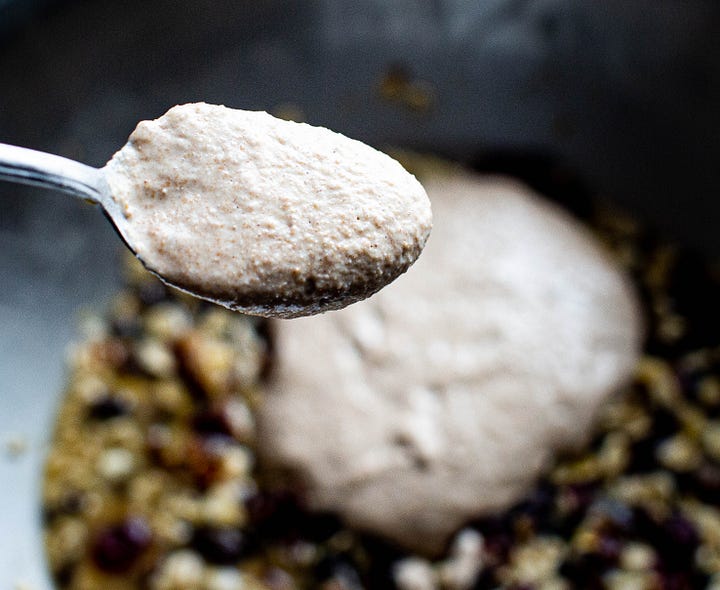
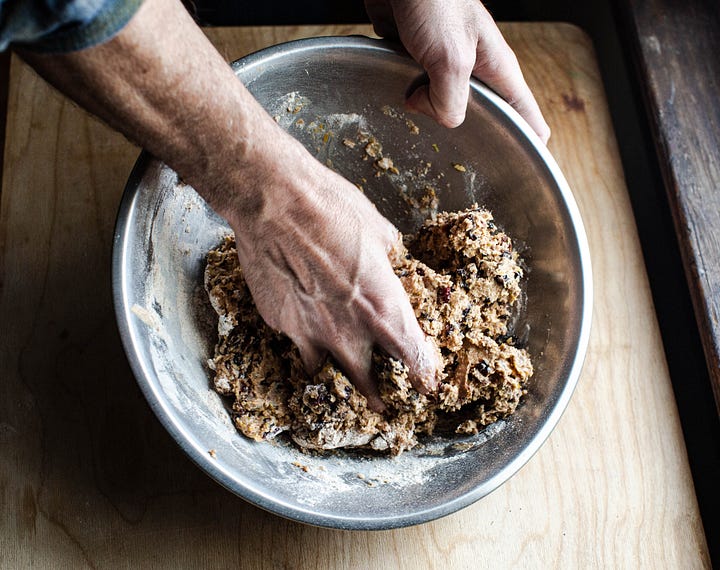
Sourdough culture*, 82g
Whole wheat, 235g
Salt, 11g
To the steeping liquid add the sourdough culture, flour, and salt. Mix until combined and fully homogenous.
*The culture should be healthy and have been fed within the past 12 hours. I use use a looser, liquid levain but a stiff levain or rye sourdough will also work, just add a little extra water (20 to 30 grams, or 1 to 2T) to your mix.
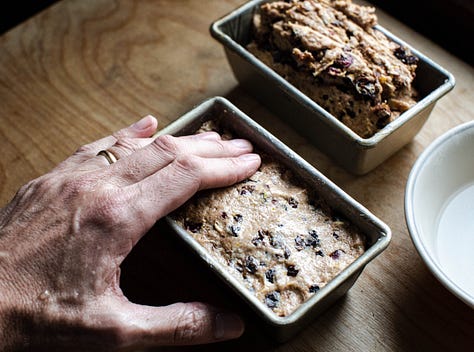
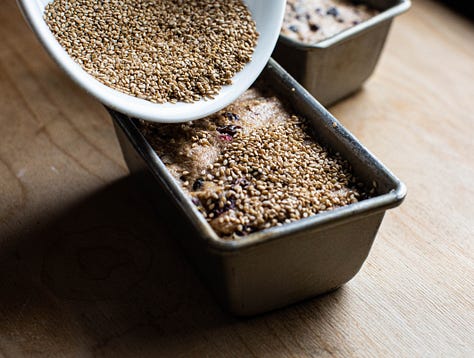

Add the dough to the prepared mini loaf pans (500g each), pressing to smooth with a wet hand.
Sesame seeds, 65g
Sprinkle the tops of each loaf with sesame seeds, fully covering the surface.
With a bench knife or stiff scraper, press an X into the surface roughly 1/2” deep.
Cover the loaves with a plastic bag and leave at room temperature (68 to 72˚F) for 10 to 12 hours (or longer, if necessary, they will be fine). Note that the rise overnight will be minimal — 1/2” to 3/4” at best.
Bake at 450˚F for 35 to 40 minutes, until golden brown. To remove from the pans, slide a knife around the loaf to release and cool briefly before cutting. (Note that the loaves will slice better once fully cooled … if you can wait.)
Happy Baking,
Martin

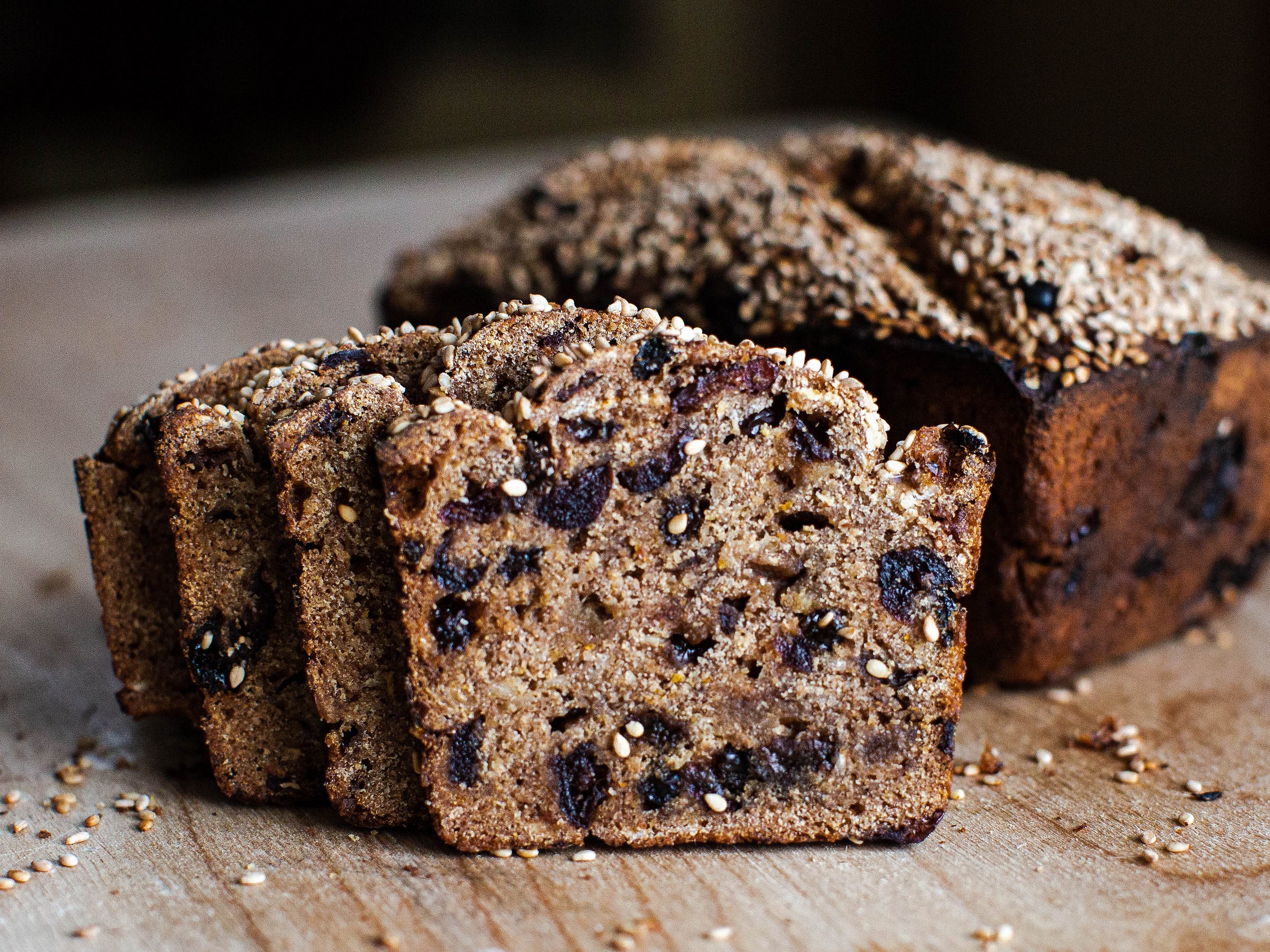
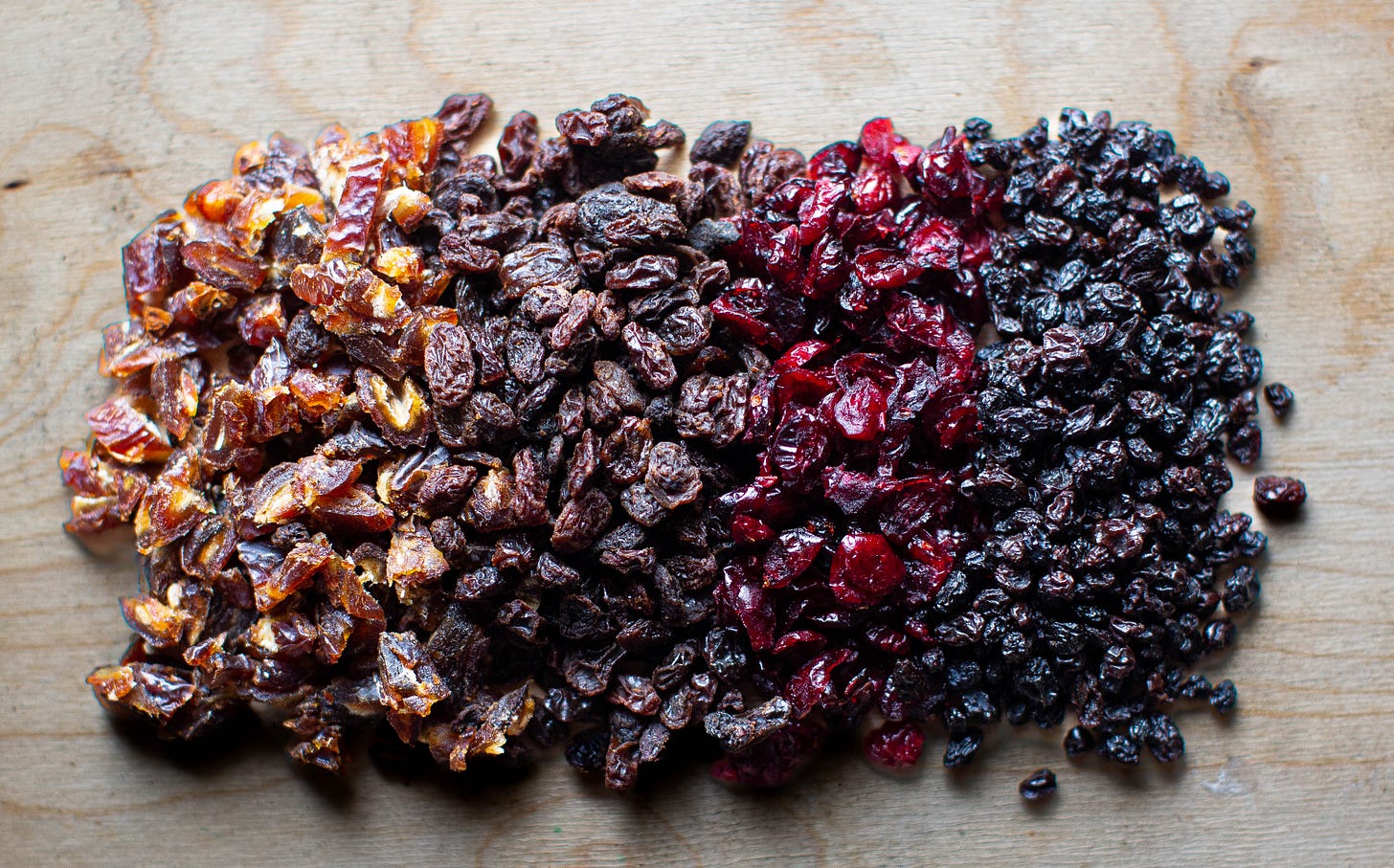
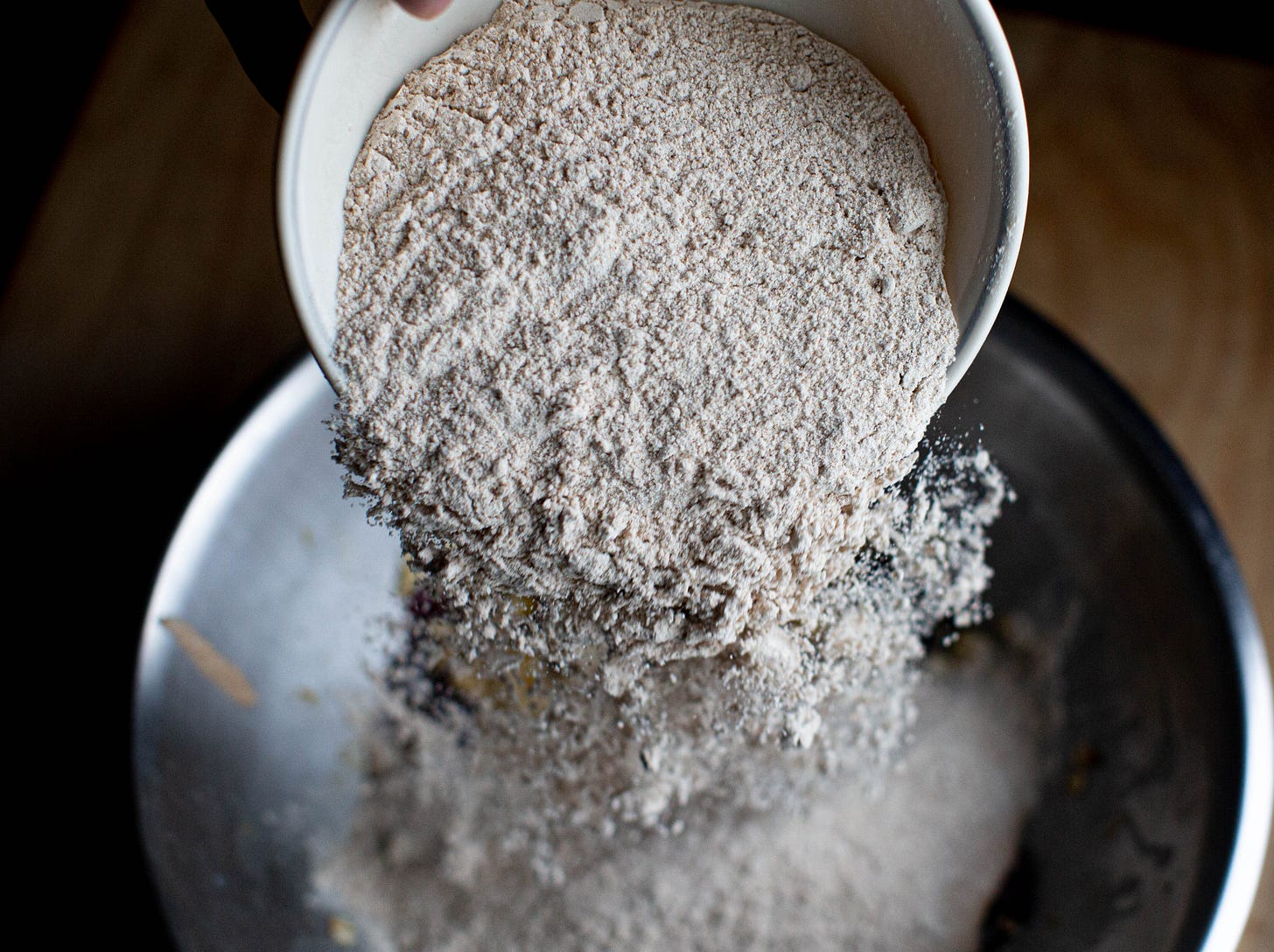
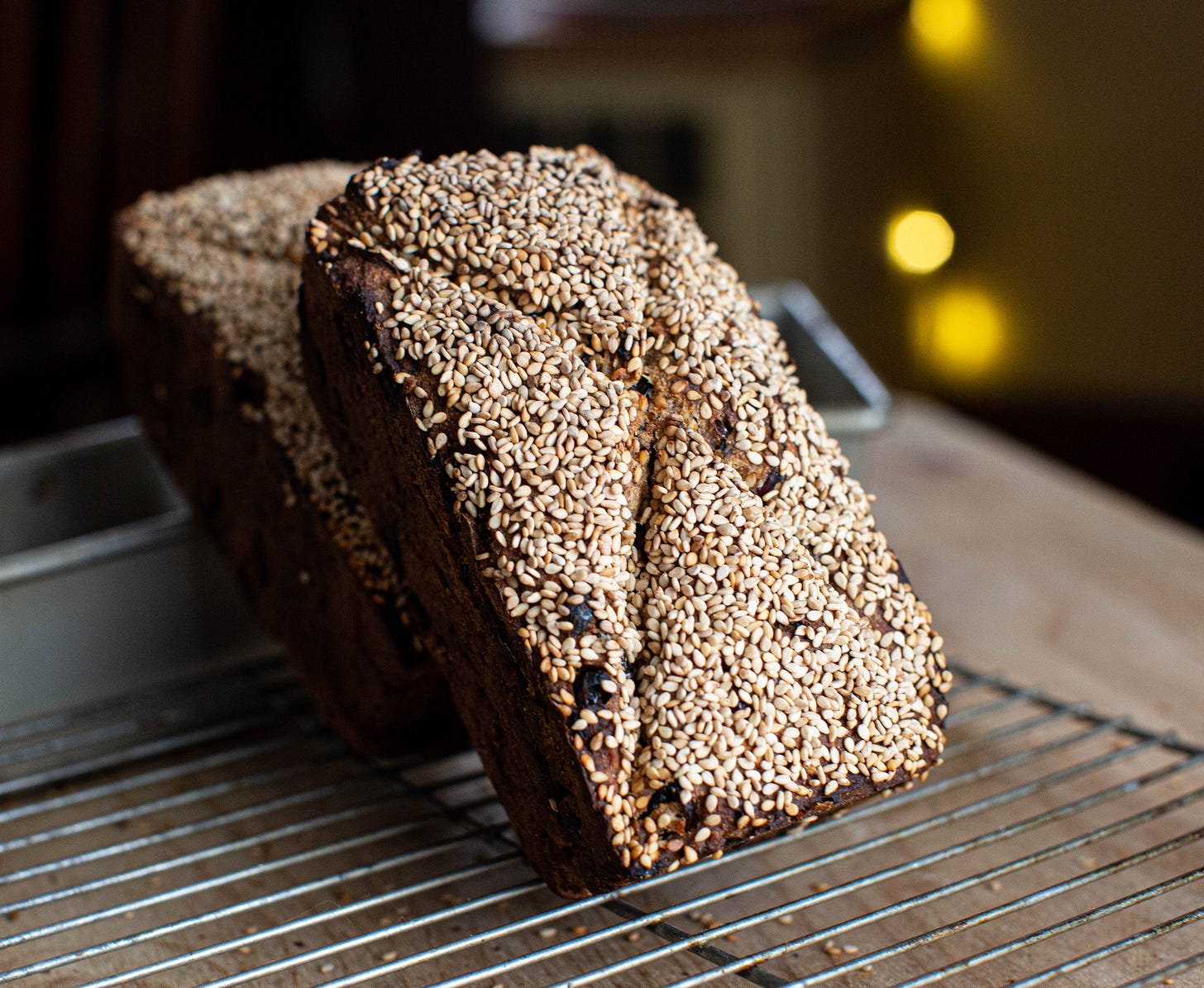
My friend brought this loaf to share at our community baking session. Utterly delicious - I had 3 slices and you're right, scrapings of butter are for amateurs!! Thank you for the care you took in putting this recipe together. It's a keeper! I'm off to make a batch for my family.
This is some of the most rewarding bread I’ve ever made! Thank you for a fabulous recipe! I needed something easy that was also deeply satisfying and this fit the bill perfectly.